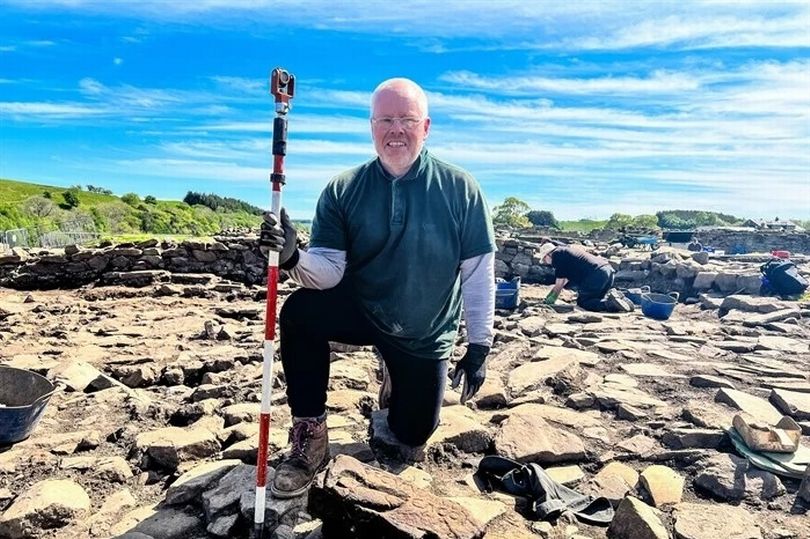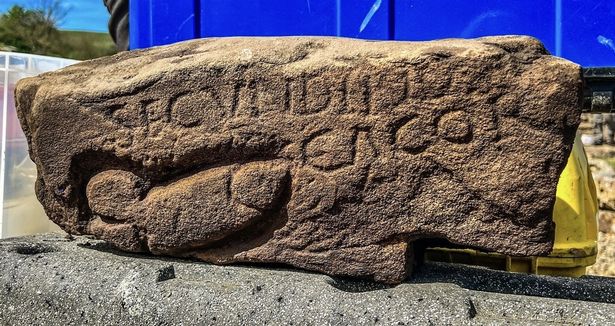Volunteer delighted to uncover very rude Ancient Roman graffiti at Vindolanda
You see them scrawled on school desks, toilet walls and underpasses across the UK. However, it seems that the tradition of drawing the male appendage as graffiti goes back far further than any of us would have realised – after a volunteer uncovered graffiti at Vindolanda depicting an explicitly carved phallus.

The popular museum has found some hugely significant archaeological finds over the years, including the world’s oldest boxing gloves and the largest collection of leather shoes, consisting of around 7,000 items.
Earlier this year, a Roman Altar from the 3rd century AD was uncovered, thought to be from a similar time period to the most recent discovery. Though this one is quite a lot ruder!
Not only was there a drawing, but the 40 x 15cm stone is also engraved with SECVNDINVS CACOR, making the graffiti a very personal insult. Specialists in Roman epigraphy, Drs Alexander Meyer, Alex Mullen and Roger Tomlin, recognised it as a mangled version of ‘Secundinus cactor’ or in English, ‘Secudinus, the sh**ter.”
Retired biochemist Dylan Herbert was delighted to make the discovery on May 19. He said: “I’d been removing a lot of rubble all week and to be honest this stone had been getting in my way, I was glad when I was told I could take it out of the trench.
“It looked from the back like all the others, a very ordinary stone, but when I turned it over, I was startled to see some clear letters. Only after we removed the mud did I realise the full extent of what I’d uncovered, and I was absolutely delighted.”

Dr Andrew Birley, director of excavations and CEO of the Vindolanda Trust said: “The recovery of an inscription, a direct message from the past, is always a great event on a Roman excavation, but this one really raised our eyebrows when we deciphered the message on the stone.
Its author clearly had a big problem with Secundinus and was confident enough to announce their thoughts publicly on a stone.
“I have no doubt that Secundinus would have been less than amused to see this when he was wandering around the site over 1,700 years ago.”
What do you think of Vindolanda’s latest discovery? Let us know!
Though the Roman phallus is often seen as a good luck charm or symbol of fertility, in this case, the author has taken the meaning and subverted it to their own aims. Each letter has been carefully carved, which would have taken a while, leaving little doubt about the depth of feeling held.
Described as a ‘fabulous’ bit of social commentary, it is expected to amuse visitors for many years to come.
According to the team at Vindolanda, carving such a message would have been one of the best ways to get a lot of people to notice a point of view, centuries before printed papers or social media existed.
Excavations have taken place at Vindolanda for almost 100 years, and in that time the site has chalked up more phallus carvings than any other on Hadrian’s Wall.
The new addition takes that tally up to 13, and while that’s considered unlucky for some, Vindolanda archaeologists hope it’s a great sign for the rest of the excavation season in a huge year for the Wall.





